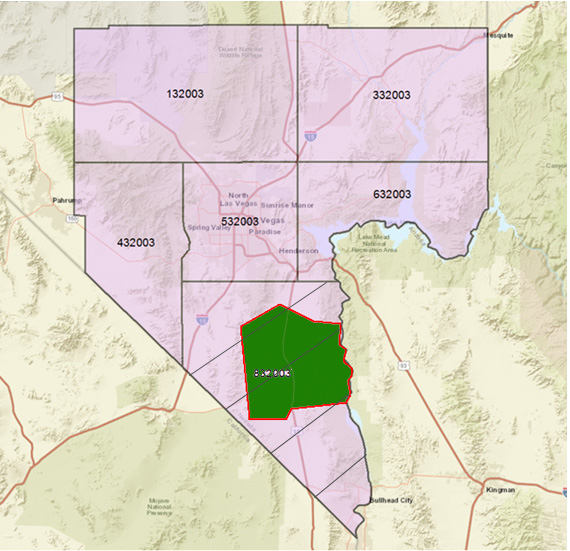Current NWR and EAS Dissemination Footprint Flash Flood Warning
|
Proposed NWR and EAS dissemination footprint Flash Flood Warning
 |
NWS Weather Forecast Office (WFO) Las Vegas, NV, is proposing a change in the dissemination of warnings via NOAA Weather Radio All Hazards (NWR) and the Emergency Alert System (EAS). This change would target the delivery of weather warnings to populations to a more targeted threat area and minimize or eliminate unnecessary delivery of weather warnings to residents located far from the threat area.
WFO Las Vegas has coordinated with Emergency Managers, the Nevada State Emergency Communications Committee, broadcasters, state and local government officials, EAS encoder/decoder manufacturers, and NWR receiver manufacturers
NOAA Weather Radio All Hazards (NWR) uses Specific Area Message Encoding (SAME) when the following warnings are issued by WFO Las Vegas:
Although NWS meteorologists specify latitude and longitude points (i.e., polygons) to identify the threat area, the warnings from Clark County are currently conveyed via NWR and the Emergency Alert System (EAS) to the whole county. This means that even if a very small part of Clark County is included in a warning, all of Clark County receives the warning via SAME. Because Clark County has 8,061 square miles, larger than a good part of New England, this is particularly problematic. Residents are unnecessarily receiving EAS and NWR notifications for warnings in areas located more than 100 miles from the actual threat area.
As a results, some listeners are ignoring warnings because they get so many that aren't nearby. This "listener fatigue" puts the public at risk when they do need to act quickly. In addition, residents are complaining to broadcasters about “too many EAS interruptions” to scheduled programming. As a result, some broadcasters decide they will no longer convey any NWS warnings to EAS (including Tornado Warnings) because the warnings do not apply to their service area.
To address the issue of SAME and EAS over alerting for large counties when only a portion of the county is, in fact, affected, four WFOs (Duluth, Glasgow, Rapid City and Tucson) assigned partial county NWR and EAS codes to sections of large counties within their area of responsibility. This partitioning has worked very well for them for many years. By using the SAME partial county location codes, these WFOs have successfully issued warnings for predefined parts of a county, which substantially reduces the “False Alarm Area” and “listener fatigue” via NWR and EAS.